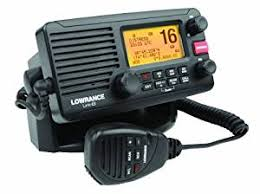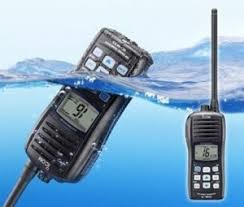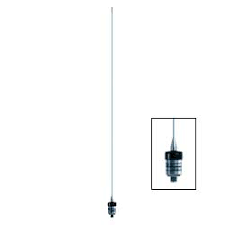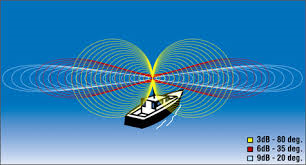|

| |
Marine VHF Radios,
Generally Speaking.
To help boaters communicate when with out sailing with; Marinas, other boaters,
requests for
 assistance, and for
Marine Safety with Coast Guard
units, the Marine VHF Radio is the authorized and preferred device to use. Using
VHF Marine radios also alerts other boaters close by to the dangers and hazards
encountered and will
involve them to respond for calls of assistance until Coast Guard rescue units can
arrive. As the general rule of the sea is that all boaters are required to
respond or assist to calls of help. Some of the newer Marine Radios have extra
Marine Weather Channels to receive or listen to continuous weather and
safety broadcasts for your area. Its a good idea to listen to these broadcasts
before sailing as they are "customized" just for boaters on the waters. assistance, and for
Marine Safety with Coast Guard
units, the Marine VHF Radio is the authorized and preferred device to use. Using
VHF Marine radios also alerts other boaters close by to the dangers and hazards
encountered and will
involve them to respond for calls of assistance until Coast Guard rescue units can
arrive. As the general rule of the sea is that all boaters are required to
respond or assist to calls of help. Some of the newer Marine Radios have extra
Marine Weather Channels to receive or listen to continuous weather and
safety broadcasts for your area. Its a good idea to listen to these broadcasts
before sailing as they are "customized" just for boaters on the waters.
Check out our Marine Weather Channel
webpage
Although cell phones have been used, they only make direct calls and they are
private calls and thus
 hamper
rescues as other boaters and rescue units cannot hear or make contact with you.
Cell Phones have an Achilles Heel or weakness as; the poor transmit power of the
phone (short range), height of the terrain, remoteness, and lack of cell towers.
Cell towers are configured for high use demands and hence are mostly used for
homes and highway usage designed to point and only operate for those directions.
The Citizen Bands (CB) Public Radios of the late 1970's in which every trucker
on the road and every kid in town had one are also not acceptable for marine
use, even though they cover more range than that of a cell phone. hamper
rescues as other boaters and rescue units cannot hear or make contact with you.
Cell Phones have an Achilles Heel or weakness as; the poor transmit power of the
phone (short range), height of the terrain, remoteness, and lack of cell towers.
Cell towers are configured for high use demands and hence are mostly used for
homes and highway usage designed to point and only operate for those directions.
The Citizen Bands (CB) Public Radios of the late 1970's in which every trucker
on the road and every kid in town had one are also not acceptable for marine
use, even though they cover more range than that of a cell phone.
Operation:
To operate and use a Marine Radio one must be aware of the strict
guidelines, protocols, and procedures to follow. This due to Rescue
Operations, safety, size of ships, and hundreds of people possibly using the
same channel due to the distance. Users of Marine Radios also need to be aware of the
radio channels designations, transmit power, usage, and radio differences
from various manufacture some of these topics we will discuss briefly here.
Rules and Regulations?:
Each country has their own set of Marine Radio Rules which can change
from time to time and hence they should be reviewed at the beginning of each
season.
Licensing:
In Canada any person who transmits on a Marine Radio must now have
their "own" Restricted Radio
Operator’s Certificate – Marine ROC(M), to be more knowledgeable in how to
operate and respond to the radio due to rescue operations, rather than the
old days of just owning a ship's station license. One can obtain their ROC
license from many different sources but the "best" option is to take one
with a full teaching course which includes books as reference. These courses
take more time to complete but explains all of the concepts and reasoning
thereof and usually include safety concepts as well. Since the life of you
and your family may depend upon it one day taking this course is well worth
it. Also when one owns the manuals, they can at the beginning of each season
reread them to refresh oneself to remain sharp and respond fast in an
emergency. These cources also cover the operation of VHF-DSC emergency
calls.
Transmit Power, Distance, and Antenna:
To have the best range for your Marine Radio the following should be
considered. Since its your primary "safety device", do spend a bit more
money in looking for higher end
 products.
One should have "two" radios; a primary fixed station and secondary
portable battery handheld unit for backups. Small Sailboats can encounter
scenarios that when the mast that the antenna is mounted to, is laid down on
the boat (eg: trailering) can render the radio more or less useless. The
antenna or cable can also become damaged in this process or the antenna
could be damaged from high winds en route trailering on the highway. Some
small sailboats when rafted all together can rock or sway back and forth
with the top of the masts colliding from the big waves of large power
boaters racing close by. Larger Sailboats also have dinghy's to access the
shoreline and usually bring their portables with them. products.
One should have "two" radios; a primary fixed station and secondary
portable battery handheld unit for backups. Small Sailboats can encounter
scenarios that when the mast that the antenna is mounted to, is laid down on
the boat (eg: trailering) can render the radio more or less useless. The
antenna or cable can also become damaged in this process or the antenna
could be damaged from high winds en route trailering on the highway. Some
small sailboats when rafted all together can rock or sway back and forth
with the top of the masts colliding from the big waves of large power
boaters racing close by. Larger Sailboats also have dinghy's to access the
shoreline and usually bring their portables with them.
Transmit Power: When in harbor close to the marina and near other
boaters, its
 preferred
to use the lower power settings for short distance communications. This also
helps out small handheld radios in prolonging the battery life. But in;
hilly terrain, far from shore, or in an emergency, the highest power setting
is the best one to use. Most radios have Low/Medium/High power settings of
1/5/25 watts and more power helps for longer distances. Some radio channels
are designated to use lower power levels to limit interference when sharing
with others. preferred
to use the lower power settings for short distance communications. This also
helps out small handheld radios in prolonging the battery life. But in;
hilly terrain, far from shore, or in an emergency, the highest power setting
is the best one to use. Most radios have Low/Medium/High power settings of
1/5/25 watts and more power helps for longer distances. Some radio channels
are designated to use lower power levels to limit interference when sharing
with others.
Distance: VHF Radios transmit line of sight, hence it is real
important to mount the antenna on the "highest height" (mast/rooftop) on the
boat. Sometimes the size of boat and type
 can
predetermine the antenna style to be used. Some antennas are designed to be
extra long in length to overcome low mounting heights and can be folded down
(hinged) on deck to pass under low bridges or when trailering. Due to the
curvature of the earth, an antenna on a boat mounted 12 feet above sea level
has a line of sight about 5 nautical miles, thus two boats set far apart
could talk to each at 10 nautical miles with the higher transmit power
increasing range. Coast Guard stations have their shore based antennas
mounted extremely high up on high radio towers to give extra range of 60
nautical miles (110 km), and can have multiple towers along the shoreline
all connected via phones lines back to the station to increase the coverage
area. can
predetermine the antenna style to be used. Some antennas are designed to be
extra long in length to overcome low mounting heights and can be folded down
(hinged) on deck to pass under low bridges or when trailering. Due to the
curvature of the earth, an antenna on a boat mounted 12 feet above sea level
has a line of sight about 5 nautical miles, thus two boats set far apart
could talk to each at 10 nautical miles with the higher transmit power
increasing range. Coast Guard stations have their shore based antennas
mounted extremely high up on high radio towers to give extra range of 60
nautical miles (110 km), and can have multiple towers along the shoreline
all connected via phones lines back to the station to increase the coverage
area.
Antenna: The type of VHF antenna, design, and its rated gain, can
help boost the radio signal. Some antennas that are mounted low are designed
to compensate slightly for this
 low
height by being quite tall or long in length 8-10 feet, and have a small
wire continuously being wrapped around a fiberglass rod, and they also have
a hinge point at the base to allow the antenna to be laid down flat on deck
for low bridges or when the boat in on the trailer. Sailboats usually mount
their antennas high up on the top of their masts and hence the antenna needs
not to be physically as long and must be far lighter in weight. They also
have small wire coil built-in the base of the antenna to reduce the length
of the antenna before the single wire whip, as with the extra height they
all ready have more range/distance. low
height by being quite tall or long in length 8-10 feet, and have a small
wire continuously being wrapped around a fiberglass rod, and they also have
a hinge point at the base to allow the antenna to be laid down flat on deck
for low bridges or when the boat in on the trailer. Sailboats usually mount
their antennas high up on the top of their masts and hence the antenna needs
not to be physically as long and must be far lighter in weight. They also
have small wire coil built-in the base of the antenna to reduce the length
of the antenna before the single wire whip, as with the extra height they
all ready have more range/distance.
Antenna Cable: Another consideration is line losses. The overall
cable length, quality or
 type
of coax cable being used, and how many splices/connectors are in between the
radio and antenna, all combined together can weaken the transmit signal by
up to 3 watts. Being an emergency device and wanting to be heard this is
very important. Additionally the gain of the antenna (narrow, medium, or
wide beam) that can focus the signal for more distance can have an effect,
but the type of boat that it is to be used upon can pre-determine that
selection. For example having a narrow beam antenna high up on a sailboat's
mast when the boat is swinging or heeling can point some of the signal into
the sky rather than across the water equally. type
of coax cable being used, and how many splices/connectors are in between the
radio and antenna, all combined together can weaken the transmit signal by
up to 3 watts. Being an emergency device and wanting to be heard this is
very important. Additionally the gain of the antenna (narrow, medium, or
wide beam) that can focus the signal for more distance can have an effect,
but the type of boat that it is to be used upon can pre-determine that
selection. For example having a narrow beam antenna high up on a sailboat's
mast when the boat is swinging or heeling can point some of the signal into
the sky rather than across the water equally.
DSC-Digital Selective Calling & GPS:
DSC: Some of newer and higher quality Marine Radios now include
the new Digital Selective Calling. That can make calls
 electronically
only on the designated DSC channel 70, and these calls do not use the
microphone. Its easier to understand if one can think of the concept, that
your radio now has two separate radios built in to one, "one for voice
calls" and "one for electronic calls" but both listening for calls at the
same time. These Electronic DSC calls are faster to send and can travel 20%
farther and hundreds of calls can share the same channel far more
efficiently. Overall DSC is great for making emergency calls, for example;
when a ship is sinking taking on water fast, and is seconds away from the
ship batteries to be flooded, just press the Emergency Button and in just
one second your MMSI# and GPS position are transmitted. electronically
only on the designated DSC channel 70, and these calls do not use the
microphone. Its easier to understand if one can think of the concept, that
your radio now has two separate radios built in to one, "one for voice
calls" and "one for electronic calls" but both listening for calls at the
same time. These Electronic DSC calls are faster to send and can travel 20%
farther and hundreds of calls can share the same channel far more
efficiently. Overall DSC is great for making emergency calls, for example;
when a ship is sinking taking on water fast, and is seconds away from the
ship batteries to be flooded, just press the Emergency Button and in just
one second your MMSI# and GPS position are transmitted.
GPS: The way that these radios operate is that each owner of a DSC
radio applies for and receives their own personal Maritime Mobile Service
Identity Number or MMSI that they program into their DSC radio. Each
time the DSC radio transmits it will now include your personal MMSI number.
These DSC Radios can also transmit your GPS location as well, either from it
being built-in on your newer DSC Radio or from an attached GPS chart
plotter/fish finder unit wired to it for the older models.
When the emergency button is pressed on your DSC radio, both your MMSI# and your GPS location are transmitted in one second.
When the Coast Guard Station hear your call electronically, it is displayed
on their computer screen with your immediate location and your MMSI#.
Overlaid on the screen can be the areas water current, wind factors,
shoreline, so the Coast
Guard can also plot an additional drift pattern circle of where your disabled vessel
could end up to aid in the rescue search. There is also a belief that they can also force
a poll or resend of your DSC's GPS location to also reconfirm and to
additionally find your location. In accessing your MMSI number the Coast
Guard can additionally find all your submitted emergency info such as your
name, address, family, boat type and boat info, to aid in the rescue and who
to contact.
One can make DSC calls to other boaters and find out their position, when
you are on a voice channel your DSC radio can alert you to incoming DSC
calls and logs them. There are also preconfigured DSC messages that you can
select to be sent out in your DSC call. Upon receiving DSC you can briefly
respond to it and then go to a voice channel and further communicate more
with them.
Sailing Clubs can also have a group MMSI# that when any messages are
directed to the group MMSI, it will also be received by all ships within
that group.
AIS-Automatied Identification:
Likewise with DSC calls, Larger ships and Vessels are required to
transmit their current position and boat info constantly every minute for
navigation safety just like airplanes. Some newer VHF DSC marine radios also
have an AIS Receiver built in to display the location of larger vessels
close by.
Marine Radio Channel Modes: A/B/I
Channels: Each Marine Radio Channel has a designated usage, power
rating, and purpose, thus one must know in advance what each channel is for
to prevent miscommunication or extra traffic. There are Emergency Channels,
port operations, lock operations, ship to ship, ship to shore, hailing,
working on board, marine safety, coast guard, marinas, Yacht and Sailing
Clubs, and radio telephone calls.
Thus some channels can be half or full duplex, or basically use a single
or a dual set of frequencies, some channels may Transmit (TX) and Receive
(RX) on the exact same frequency, while other channels depending on usage
may invoke using two separate frequencies, one for the Transit and one for
Receive, for example: to communicate via radio to shore based telephone
operators.
Modes: Not everything is the same across the board for channel
frequencies as they can vary for the country being used. Over time there has
been changes; new technology, radio standards, and keeping of older radios
compatible with the newer added frequencies. To make it easier for the
public, radios modes are standardized into 3 modes of operation (A, B, I).
 | A-Mode, United States, reserve some frequencies for their own
personal use. |
 | B-Mode, Canada. |
 | I-Mode, International. |
Note: Only on those channels with different modes eg: 21A, 21B, they may
not be able to cross-communicate with each other as they use a different
frequencies. The Emergency Channel 16, Hailing Channel 9, and
Marina Channel 68, are the same, regardless of modes.
The following list gives a "general description" of some the radio
channels, frequencies, and usage.
|
List of
Maritime Frequencies, Channel Number - Frequency - Usage |
VHF
Marine
Channel |
Transmit
Frequency |
Receive
Frequency |
Designation |
| 01A |
156.050 |
156.050 |
Commercial |
| 05A |
156.250
|
156.250 |
Commercial |
| 06 |
156.300
|
156.300 |
Intership safety |
| 07A |
156.350 |
156.350 |
Commercial |
| 08 |
156.400
|
156.400
|
Commercial (Intership only) |
| 09 |
156.450 |
156.450 |
Boater
Calling, Commercial and Non Commercial |
| 10 |
156.500
|
156.500
|
Commercial |
| 11 |
156.550 |
156.550 |
Commercial, vts |
| 12 |
156.600
|
156.600
|
Port
Operations, vts |
| 13
|
156.650 |
156.650 |
Port
Operations & Intership (bridge to bridge), Ships >20 meters keep
listening watch in US waters |
| 14 |
156.700 |
156.700 |
Port
Operations, Commercial, vts |
| 15 |
------- |
156.750 |
Environmental Receive Only Class C EPIRBSs |
| 16 |
156.800 |
156.800 |
Calling
and Distress, Ships to keel listening watch on this channel.
|
| 17 |
156.850 |
156.850 |
State &
local Government Maritime Control |
| 18A |
156.900 |
156.900 |
Commercial |
| 19A |
156.950 |
156.950 |
Commercial |
|
20 |
157.000 |
161.600 |
Port Operations (duplex) |
| 20A |
157.000 |
157.000 |
Port
Operations |
| 21A |
157.050 |
157.050 |
U.S.
Coast Guard |
| 21B |
161.650 |
161.650 |
Canadian Coast Guard, VBA-4 Sault Ste. Marie area, operated
by Thunder Bay Coast Guard. |
| 22A |
157.100
|
157.100
|
Coast
Guard Liaison |
| 23A |
157.150
|
157.150
|
U.S.
Coast Guard |
| 23B |
161.750 |
161.750 |
Coast
Guard |
| 24 |
157.200 |
161.800 |
Radio
telephone |
| 24B |
161.800 |
161.800 |
Radio
telephone |
| 25 |
157.250 |
161.850 |
Radio
telephone |
| 25B |
161.850 |
161.850 |
Radio
telephone |
| 26
|
157.300
|
161.900
|
Radio
telephone |
| 26B
|
161.900 |
161.900 |
Radio
telephone |
| 27
|
157.350 |
161.950 |
Radio
telephone |
| 27B
|
161.950 |
161.950 |
Radio
telephone |
| 28
|
157.400 |
162.000 |
Radio
telephone |
| 28B |
162.000 |
162.000 |
Radio
telephone |
| 63A |
156.175 |
156.175 |
Commercial |
| 65A
|
156.275
|
156.275
|
Port
Operations |
| 66A
|
156.325
|
156.325
|
Port
Operations |
| 67
|
156.375
|
156.375
|
Commercial |
| 68 |
156.425 |
156.425 |
Non-Commercial, Marinas |
| 69
|
156.475 |
156.475 |
Non-Commercial |
| 70 |
156.525 |
156.525 |
Digital
Selective Calling (no voice communications alowed) |
| 71 |
156.575 |
156.575 |
Non-Commercial |
| 72 |
156.625 |
156.625 |
Non-Commercial (intership only) |
| 73
|
156.675
|
156.675
|
Port
Operations |
| 74 |
156.725 |
156.725 |
Port
Operations (intership only) |
| 77 |
156.875 |
156.875 |
Commercial |
| 78A
|
156.925 |
156.925 |
Non-Commercial |
| 79A
|
156.975 |
156.975 |
Commercial |
| 80A
|
157.025
|
157.025
|
Commercial |
| 81A
|
157.075 |
157.075 |
US
Government |
| 82A
|
157.125 |
157.125 |
US
Government |
| 83A |
157.175
|
157.175
|
US
Coast Guard |
| 83B |
161.775 |
161.775 |
Canadian Coast Guard Thunder Bay Weather Forecasts |
| 84 |
157.225
|
161.825 |
Radio
telephone |
| 85 |
157.275
|
161.875 |
Radio
telephone |
| 86 |
157.325
|
161.925
|
Radio
telephone |
| 87 |
157.375 |
161.975
|
Radio
telephone |
| 88 |
157.425
|
162.025
|
Commercial |
| 88A |
157.425
|
157.425
|
Commercial (intership only) |
| AIS1 |
161.975
|
161.975
|
AIS
Automatic Identification Systems |
| AIS2 |
162.025
|
162.025
|
AIS
Automatic Identification Systems |
|